Introducing MySQL's real-time performance monitoring tool
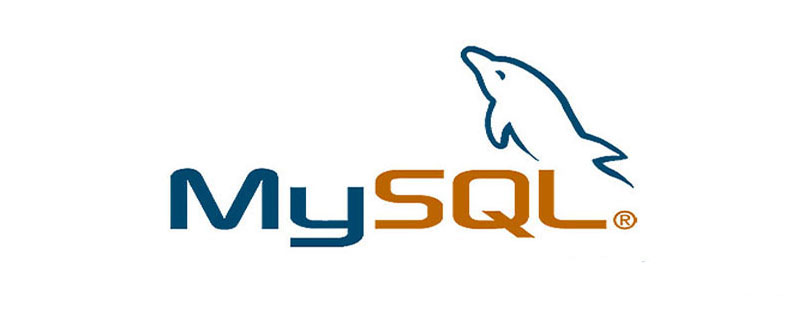
Real-time performance status data of the operating system and mysql database are particularly important, especially when there is performance jitter. These real-time performance data can quickly help you locate the performance of the system or MySQL database. Bottlenecks, just like when you use command tools such as "top, sar, iostat" on a Linux system, you can immediately determine whether the performance bottleneck of the OS is on IO or CPU, so it is more important to collect/display these performance data. What important real-time performance status indicators can reflect the performance load of the system and MySQL database?
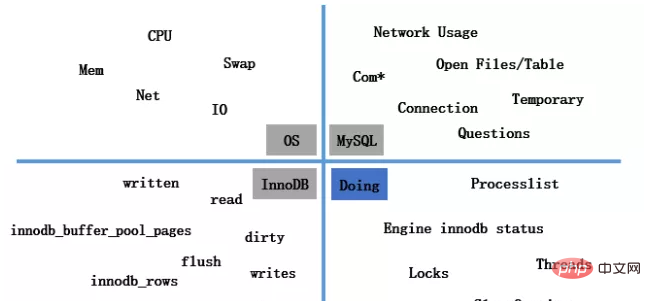
Currently, running MySQL on Linux is standard for most Internet companies. The performance data indicators in the above picture are the real-time indicators that I think are more important in Linux, MySQL, and InnoDB. Status data, however, the Doing column in the above picture is actually more important. The reason why it is called Doing is because indicator items such as "processlist, engine innodb status, locks" truly reflect what MySQL is doing at this time.
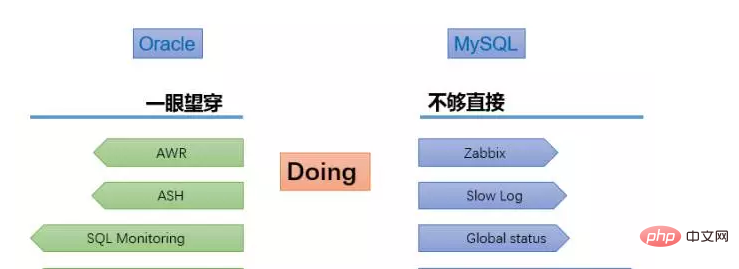
Let’s take a look at the Oracle database. The Oracle database provides many diagnostic tools such as "AWR, ASH, SQL Monitor", etc. You can see at a glance what the database is doing. What, you can even know the performance load and what the database was doing at any time period in the past 30 days.
Although there are excellent monitoring tools such as "zabbix, PMM" in MySQL, they can only reflect some performance data curves of the database history. For example, TPS is high, temporary tables are used too much, and InnoDB Deadlocks, but for what MySQL was doing at the time, I can only say that it was not direct enough. If you are on site, you can catch what MySQL is doing, but there are always times when you are not on site. If you were asked what was the reason for the performance jitter of the database last night? How to quickly reproduce the scene to find the cause of the jitter?
The answer is to use "doDBA tools", which is a free console-based monitoring tool.
What are doDBA tools
doDBA tools is a console-based remote monitoring tool. It does not require any software to be installed on the local/remote system. It can collect real-time data on the operating system, MySQL, InnoDB provides real-time performance status data and can generate Doing log files to help you quickly understand/optimize the system and MySQL database.
Features
基于golang语言开发 可收集Linux、MySQL相关性能数据 可本地或远程收集,可多台 mytop --Like Linux TOP 基于并发生成Doing日志,复现现场 可记录到日志文件 doDBA tools 工作原理
Remotely collect system information by connecting to the remote server through ssh (user name and password or establishing trust). The collection method is by reading the Linux proc file meminfo, diskstats, uptime, net, vmstat, cpuinfo, loadavg and other files, which are consistent with pmm and zabbix collection methods.
Remotely collect MySQL information by connecting to the MySQL database through MySQL tcp. You only need to grant the connection user PROCESS and SELECT permissions.
The collection of system information and MySQL information can be separated. If you only want to collect system information, you only need to provide the system user name and password. If you only collect MySQL, you can only provide MySQL connection information. If you are an rds user, you can Using the -rds parameter, the collection of system information will be automatically ignored when using mytop.
How to use
Github主页: https://github.com/dblucyne/dodba_tools Download: wget https://raw.githubusercontent.com/dblucyne/dodba_tools/master/doDBA --no-check-certificatewget https://raw.githubusercontent.com/dblucyne/dodba_tools/master/doDBA.conf --no-check-certificatechmod +x doDBA
You can use it directly after downloading it, and it does not depend on any environment.
Usage help:
./doDBA -help
-c string
configuration file.(default "doDBA.conf")
-h string
Connect to host/IP.
-sys
Print linux info.
-myall
Print linux and mysql info.
-mysql
Print mysql info.
-innodb
Print innodb info.
-mytop
Print mysql prcesslist,like top.
-i duration
refresh interval in seconds.(1s)
-t int
doing on Threads_running.(50)
-rds
Ignore system info.
-log
Print to file by day.
-nocolor
Print to nocolor.Usage examples
1. Collect Linux performance data
./doDBA -h=10.1.x.xx -sys
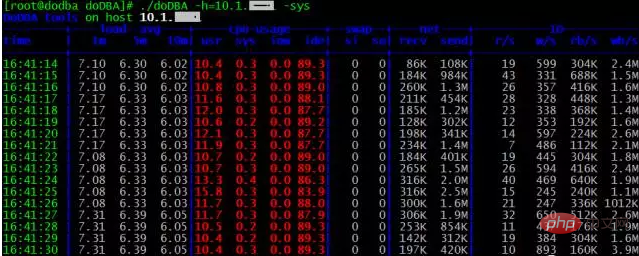
2 . Collect MySQL performance data
./doDBA -h=10.1.x.xx -mysql
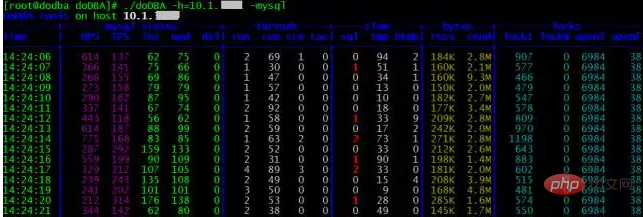
3. Collect InnoDB performance data
./doDBA -h=10.1.x.xx -innodb
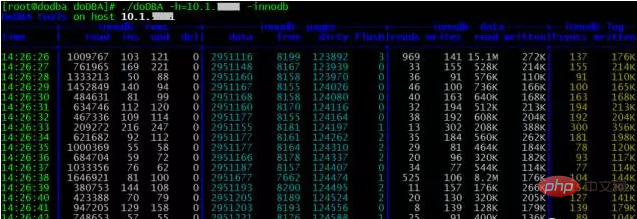
./doDBA -h=10.1.x.xx -myall

./doDBA -h=10.1.x.xx -mytop

6. 借助Shell收集多台
cat ip.txt 10.1.x.x110.1.x.x2 Shell cat ip.txt | while read ip; do echo $ip; ./doDBA -h=$ip -mysql -log </dev/null & done
7. 收集到日志文件
./doDBA -h=10.1.x.xx -mysql -log

8. 开启Doing功能
使用【-t】参数可以基于Threads_running的数量设置阈值,设置后可记录「processlist,engine innodb status」信息到dodba.log日志中,--复现现场。
/doDBA -h=10.1.x.xx -myall -t=3

9. 查看Doing日志
tail -f dodba.log
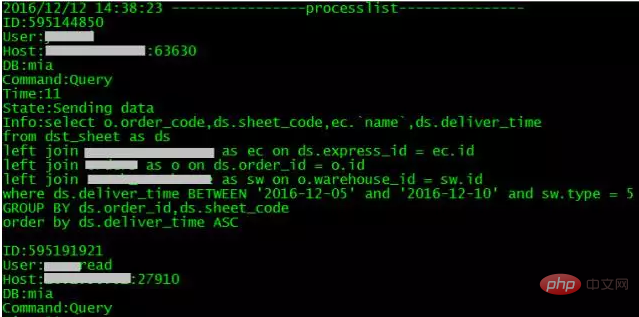
以上就是MySQL 的实时性能监控利器的全部内容。
相关参考:MySQL教程
The above is the detailed content of Introducing MySQL's real-time performance monitoring tool. For more information, please follow other related articles on the PHP Chinese website!

Hot AI Tools

Undresser.AI Undress
AI-powered app for creating realistic nude photos

AI Clothes Remover
Online AI tool for removing clothes from photos.

Undress AI Tool
Undress images for free

Clothoff.io
AI clothes remover

Video Face Swap
Swap faces in any video effortlessly with our completely free AI face swap tool!

Hot Article

Hot Tools

Notepad++7.3.1
Easy-to-use and free code editor

SublimeText3 Chinese version
Chinese version, very easy to use

Zend Studio 13.0.1
Powerful PHP integrated development environment

Dreamweaver CS6
Visual web development tools

SublimeText3 Mac version
God-level code editing software (SublimeText3)

Hot Topics
 1655
1655
 14
14
 1414
1414
 52
52
 1307
1307
 25
25
 1254
1254
 29
29
 1228
1228
 24
24
 MySQL's Role: Databases in Web Applications
Apr 17, 2025 am 12:23 AM
MySQL's Role: Databases in Web Applications
Apr 17, 2025 am 12:23 AM
The main role of MySQL in web applications is to store and manage data. 1.MySQL efficiently processes user information, product catalogs, transaction records and other data. 2. Through SQL query, developers can extract information from the database to generate dynamic content. 3.MySQL works based on the client-server model to ensure acceptable query speed.
 How to start mysql by docker
Apr 15, 2025 pm 12:09 PM
How to start mysql by docker
Apr 15, 2025 pm 12:09 PM
The process of starting MySQL in Docker consists of the following steps: Pull the MySQL image to create and start the container, set the root user password, and map the port verification connection Create the database and the user grants all permissions to the database
 Laravel Introduction Example
Apr 18, 2025 pm 12:45 PM
Laravel Introduction Example
Apr 18, 2025 pm 12:45 PM
Laravel is a PHP framework for easy building of web applications. It provides a range of powerful features including: Installation: Install the Laravel CLI globally with Composer and create applications in the project directory. Routing: Define the relationship between the URL and the handler in routes/web.php. View: Create a view in resources/views to render the application's interface. Database Integration: Provides out-of-the-box integration with databases such as MySQL and uses migration to create and modify tables. Model and Controller: The model represents the database entity and the controller processes HTTP requests.
 Solve database connection problem: a practical case of using minii/db library
Apr 18, 2025 am 07:09 AM
Solve database connection problem: a practical case of using minii/db library
Apr 18, 2025 am 07:09 AM
I encountered a tricky problem when developing a small application: the need to quickly integrate a lightweight database operation library. After trying multiple libraries, I found that they either have too much functionality or are not very compatible. Eventually, I found minii/db, a simplified version based on Yii2 that solved my problem perfectly.
 Laravel framework installation method
Apr 18, 2025 pm 12:54 PM
Laravel framework installation method
Apr 18, 2025 pm 12:54 PM
Article summary: This article provides detailed step-by-step instructions to guide readers on how to easily install the Laravel framework. Laravel is a powerful PHP framework that speeds up the development process of web applications. This tutorial covers the installation process from system requirements to configuring databases and setting up routing. By following these steps, readers can quickly and efficiently lay a solid foundation for their Laravel project.
 MySQL vs. Other Programming Languages: A Comparison
Apr 19, 2025 am 12:22 AM
MySQL vs. Other Programming Languages: A Comparison
Apr 19, 2025 am 12:22 AM
Compared with other programming languages, MySQL is mainly used to store and manage data, while other languages such as Python, Java, and C are used for logical processing and application development. MySQL is known for its high performance, scalability and cross-platform support, suitable for data management needs, while other languages have advantages in their respective fields such as data analytics, enterprise applications, and system programming.
 MySQL and phpMyAdmin: Core Features and Functions
Apr 22, 2025 am 12:12 AM
MySQL and phpMyAdmin: Core Features and Functions
Apr 22, 2025 am 12:12 AM
MySQL and phpMyAdmin are powerful database management tools. 1) MySQL is used to create databases and tables, and to execute DML and SQL queries. 2) phpMyAdmin provides an intuitive interface for database management, table structure management, data operations and user permission management.
 MySQL vs. Other Databases: Comparing the Options
Apr 15, 2025 am 12:08 AM
MySQL vs. Other Databases: Comparing the Options
Apr 15, 2025 am 12:08 AM
MySQL is suitable for web applications and content management systems and is popular for its open source, high performance and ease of use. 1) Compared with PostgreSQL, MySQL performs better in simple queries and high concurrent read operations. 2) Compared with Oracle, MySQL is more popular among small and medium-sized enterprises because of its open source and low cost. 3) Compared with Microsoft SQL Server, MySQL is more suitable for cross-platform applications. 4) Unlike MongoDB, MySQL is more suitable for structured data and transaction processing.





